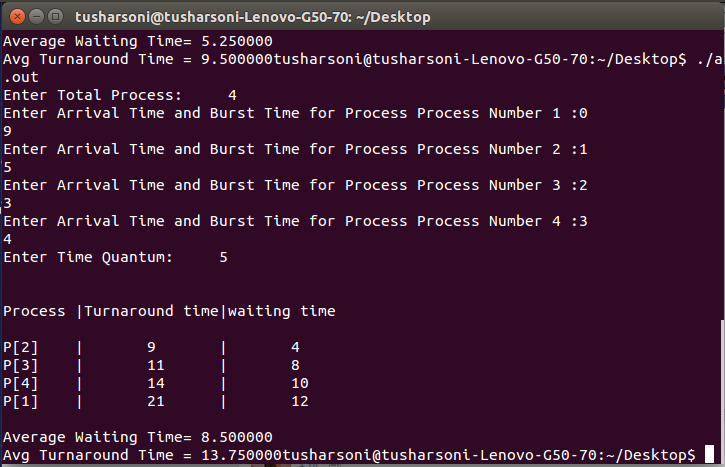Non Preemptive Scheduling Program In C
Click here to download the C++ code. The code is written for g++ compiler. If you use any other compiler then make the changes as per the needs. I haven't used any object oriented concepts but if you want then please do mention it in the further comments. Let us learn how to implement non-preemptive priority scheduling algorithm in C programming with its explanation, output and much more.
The remaining processes are also executed in the order of their burst times. However, there may be scenarios where one or more processes have same execution time.
In such cases, the jobs are based on first come first serve basis or in other words, FIFO approach is used. This is a preemptive algorithm which means that the CPU can leave a process while under execution, and can move to the next process in the queue. Meanwhile, the current state of the process is saved by context switch and another job can be processed in the meantime. Once the CPU scheduler comes back to the previous job which was incomplete, resumes it from where it was stopped. The shortest job first algorithm is also popularly known by the following names:. Shortest Remaining Time First algorithm.
Shortest Job Next algorithm. Shortest Process Next algorithm Note: This SJF preemptive scheduling program in c with output considers the arrival time of the processes entering the job queue. Advantages. The response time is much better as compared to FCFS algorithm. Minimum average waiting time is achieved.
The throughput time is good as the burst time of the processes is less. Optimum turnaround time. Disadvantages. The execution time of all the jobs in the queue must be known in advance which is not possible in all the scenarios.
Vector graphics software mac os. The processes with larger burst time will have a high waiting time, and this may lead to starvation. Note: This preemptive shortest job first scheduling program in c language is compiled with GNU GCC compiler using Linux terminal on Linux Ubuntu operating system.
The SJF algorithm is also popularly known by the following names:. Shortest Job Next algorithm.
Shortest Remaining Time First algorithm. Shortest Process Next algorithm Initially, the job queue contains multiple processes for execution. According to the SJF algorithm, the processes are compared with each other and the process that has the shortest burst time (execution time) gets executed first.
The remaining processes are also executed in the order of their burst times. If there are two or more processes having the same burst time, the processes are executed in the order of their arrival.

Non Preemptive Priority

This is a non-preemptive algorithm which means that the CPU cannot leave a process in execution and start execution of another process. Once the CPU starts execution of a job, it has to complete it successfully and then it can move to any other process in the job queue.
Note: This SJF non preemptive scheduling program in c with output does not consider arrival time of the processes entering the job queue. Advantages. The response time of the processes is better. The throughput time is much better as the time taken for execution is much less. The overall performance of the system is efficient. Disadvantages. The execution time of all the processes in the job queue must be known in advance to apply the algorithm efficiently to all the jobs.
The processes with larger execution time will have a higher waiting time, and this may lead to starvation. Note: This shortest job first scheduling program in c language is compiled with GNU GCC compiler using Linux terminal on Linux Ubuntu operating system.